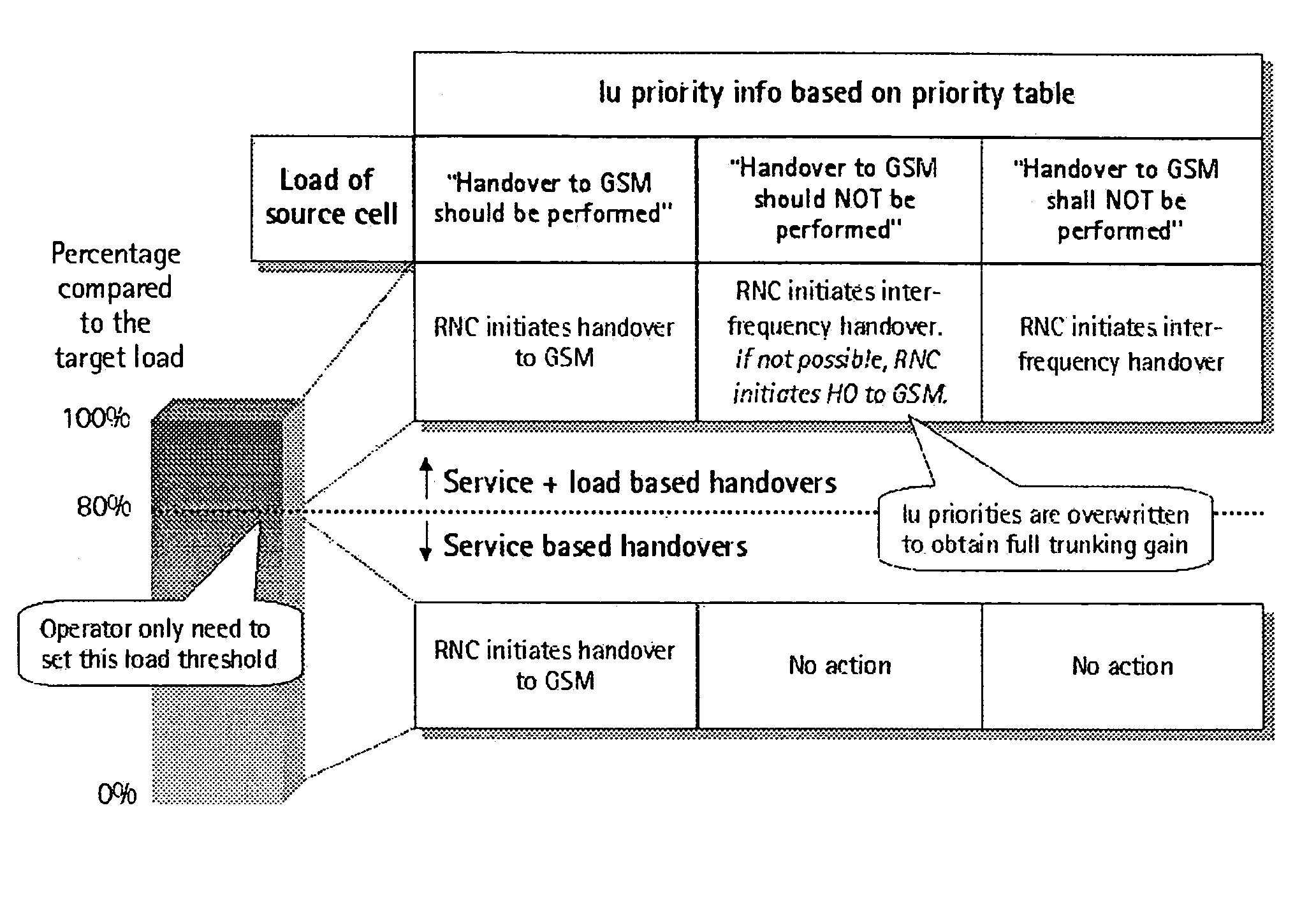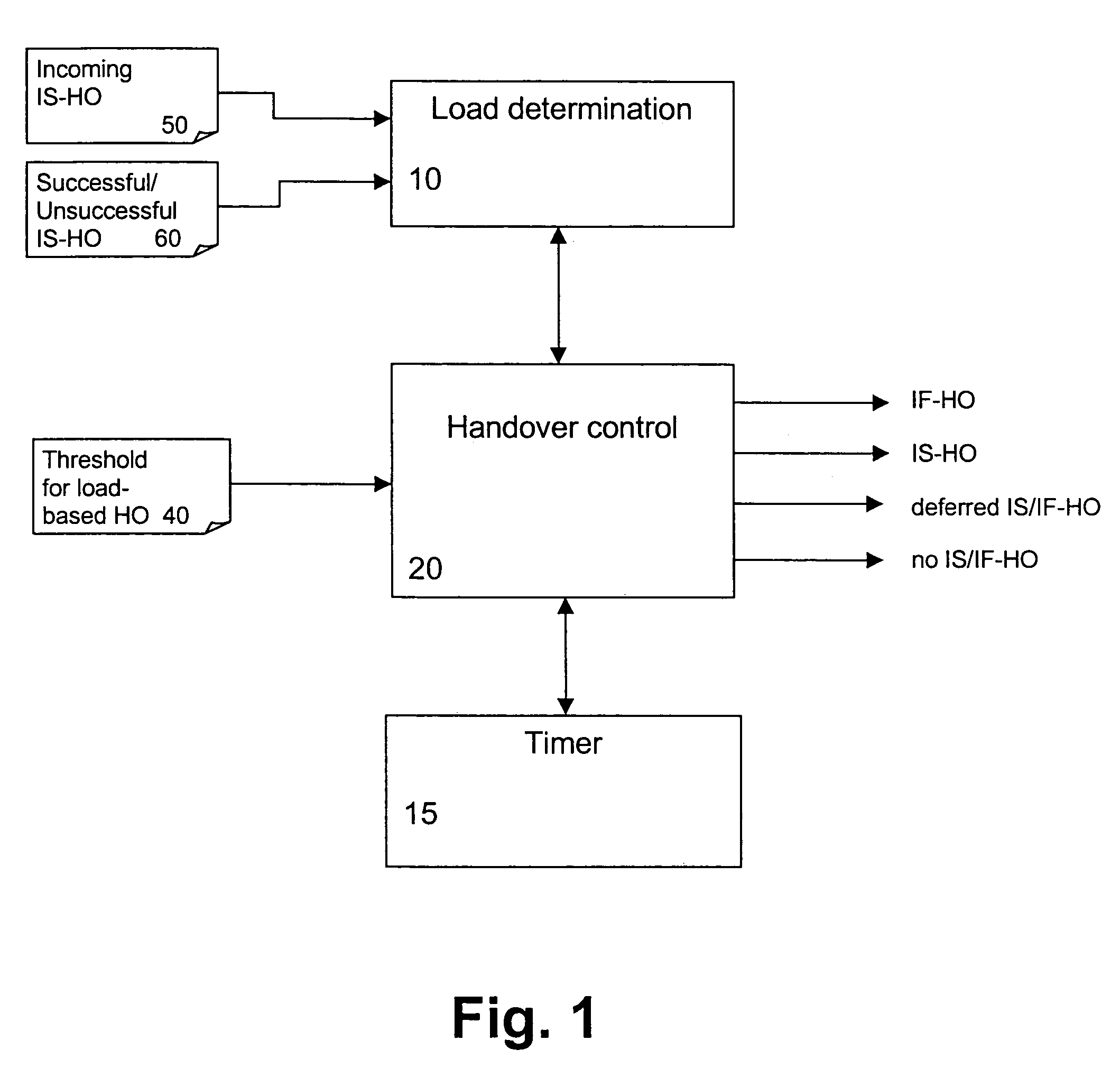Method and network element for controlling handover
- Summary
- Abstract
- Description
- Claims
- Application Information
AI Technical Summary
Benefits of technology
Problems solved by technology
Method used
Image
Examples
Embodiment Construction
[0039]The preferred embodiment will now be described based on a connection transfer functionality in a cellular network environment comprising a GSM system and a WCDMA system.
[0040]FIG. 1 shows a schematic block diagram of a connection transfer or handover functionality provided in a network element such as a base station controller (BSC) of the GSM system or the radio network controller (RNC) of a WCDMA system.
[0041]According to FIG. 1, a handover control function or unit 20 is provided which generates a signaling for an IF-HO or IS-HO based on an information obtained from a load determination function or unit 10 and specific other parameters required for a decision on the initiation of a IF-HO or a IS-HO. Such parameters may comprise a predetermined threshold 40 for load-based handovers, which may be stored in a corresponding memory or register. The threshold 40 may be set by an operator or by the handover control unit 20 itself.
[0042]The load determination unit 10 is arranged to ...
PUM
 Login to View More
Login to View More Abstract
Description
Claims
Application Information
 Login to View More
Login to View More - R&D
- Intellectual Property
- Life Sciences
- Materials
- Tech Scout
- Unparalleled Data Quality
- Higher Quality Content
- 60% Fewer Hallucinations
Browse by: Latest US Patents, China's latest patents, Technical Efficacy Thesaurus, Application Domain, Technology Topic, Popular Technical Reports.
© 2025 PatSnap. All rights reserved.Legal|Privacy policy|Modern Slavery Act Transparency Statement|Sitemap|About US| Contact US: help@patsnap.com



